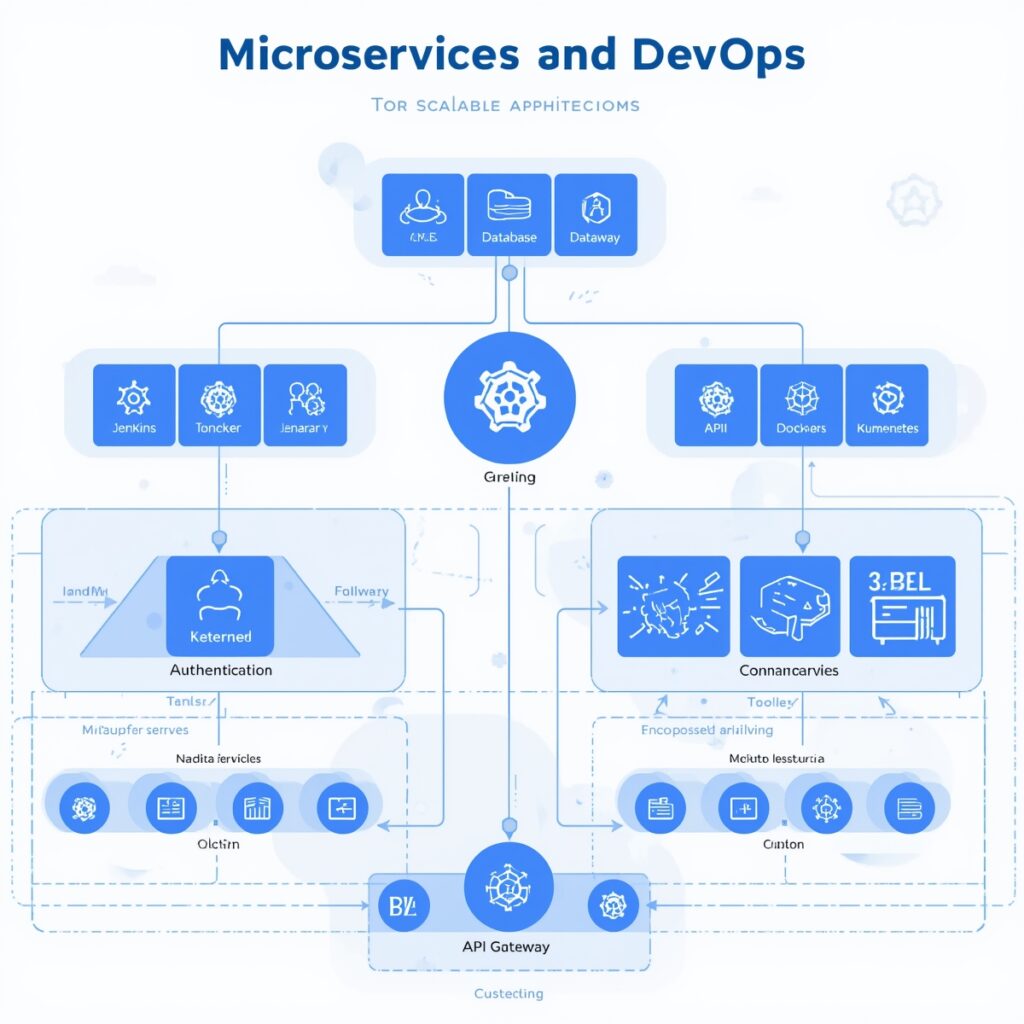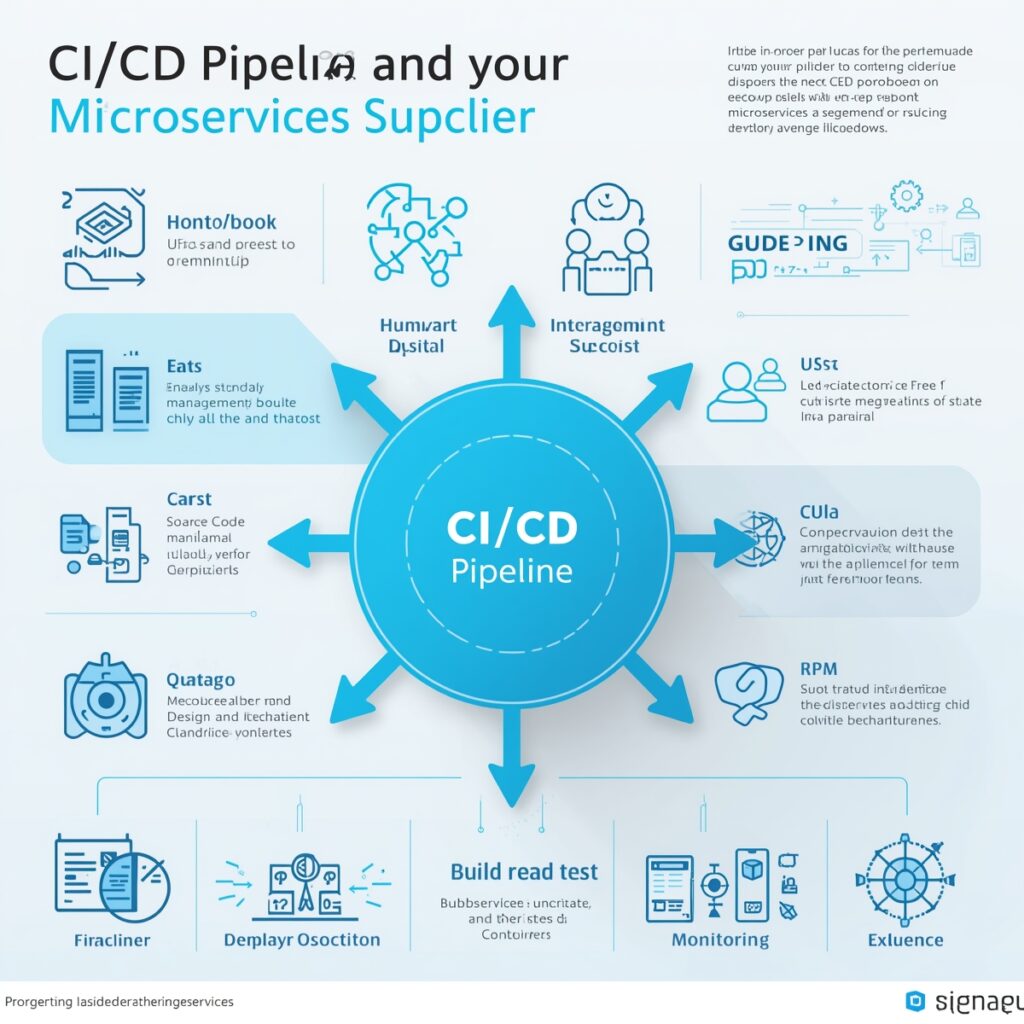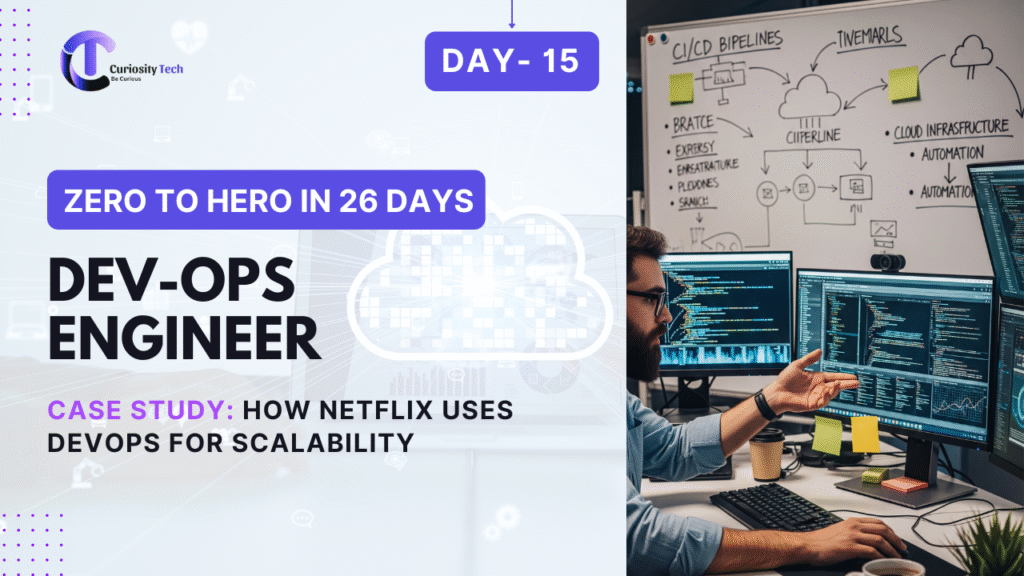Introduction:
In today’s DevOps world, microservices are the go-to way to build apps that are scalable, reliable, and easy to maintain. Unlike big all-in-one systems, microservices let teams work on parts of the app separately, deploy them faster, and scale as needed. These fit perfectly into automated DevOps pipelines.
At CuriosityTech.in, we teach engineers how to design microservices, set up CI/CD, and monitor large-scale applications.
What are Microservices?
Microservices are small, independent parts of an app that each handle one task. Their main features are:
- Independent Development: Teams manage their own services.
- Independent Deployment: Each service can be updated without affecting others.
- Technology Flexibility: Services can use different languages or tools.
- Resilience: If one service fails, the whole system keeps running.
- Scalability: Each service can grow or shrink based on need.
Microservices are key to fast, flexible DevOps in the cloud, helping teams innovate quickly and work efficiently.
Benefits of Microservices in DevOps
| Benefit | Description |
| Independent Deployment | Each service can be updated without affecting others. |
| Scalable Architecture | Services can scale individually based on traffic. |
| Improved Fault Isolation | Failures are contained within individual services. |
| Faster Development | Smaller codebases reduce complexity and accelerate delivery. |
| Technology Flexibility | Teams choose the best tools for each service. |
Microservices & DevOps Architecture Diagram:

CI/CD Integration with Microservices
Code Commit: Developers save their microservice code to a Git repository.
Automated Build: Jenkins or GitLab CI builds Docker containers for each service.
Testing: Each service runs its own unit, integration, and contract tests.
Deployment: Helm charts or Kubernetes files deploy the services to clusters.
Monitoring & Logging: Tools like Prometheus, Grafana, and ELK monitor each service’s performance and logs.
Auto-Scaling: Kubernetes automatically adjusts the number of service instances based on demand.
Infographic Pipeline Image:

Best Practices for Microservices & DevOps
| Practice | Explanation |
| Service Isolation | Keep microservices independent to reduce inter-service dependencies. |
| API Versioning | Ensure backward compatibility for client applications. |
| Centralized Logging | Aggregate logs for observability using ELK or Grafana Loki. |
| Distributed Tracing | Use tools like Jaeger or Zipkin to trace requests across services. |
| Automated CI/CD Pipelines | Deploy each microservice independently with automated testing and monitoring. |
| Service Mesh | Manage communication, security, and traffic between services using Istio or Linkerd. |
Challenges & Solutions in Microservices
| Challenge | Solution |
| Complexity in Service Management | Use service discovery, API gateways, and orchestration tools like Kubernetes |
| Data Consistency | Implement eventual consistency or event-driven architecture |
| Monitoring Multiple Services | Centralize logs, metrics, and traces in unified dashboards |
| Deployment Dependencies | Use CI/CD pipelines with automated dependency checks and rollback strategies |
Practical Use Case: E-Commerce Microservices
- User Service: Manages customer accounts.
- Order Service: Handles orders and inventory.
- Payment Service: Processes transactions.
- Messaging Layer: Kafka manages communication between services.
- Monitoring: Prometheus alerts on failed payments or slow responses.
- Deployment: Each service is deployed independently using Helm and Kubernetes pipelines.
At CuriosityTech.in, learners build and deploy complete microservices architectures with automated CI/CD, monitoring, and scaling for real-world use.
Conclusion:
Microservices and DevOps together help build apps that are scalable, reliable, and easy to maintain. Using CI/CD pipelines, container management, and monitoring is key to success. By mastering microservices, DevOps engineers can speed up deployments, isolate problems better, and scale apps efficiently.
A CuriosityTech.in, learners work on real microservices projects using Kubernetes, CI/CD, monitoring tools, and service meshes—getting ready for advanced DevOps roles in big companies.


